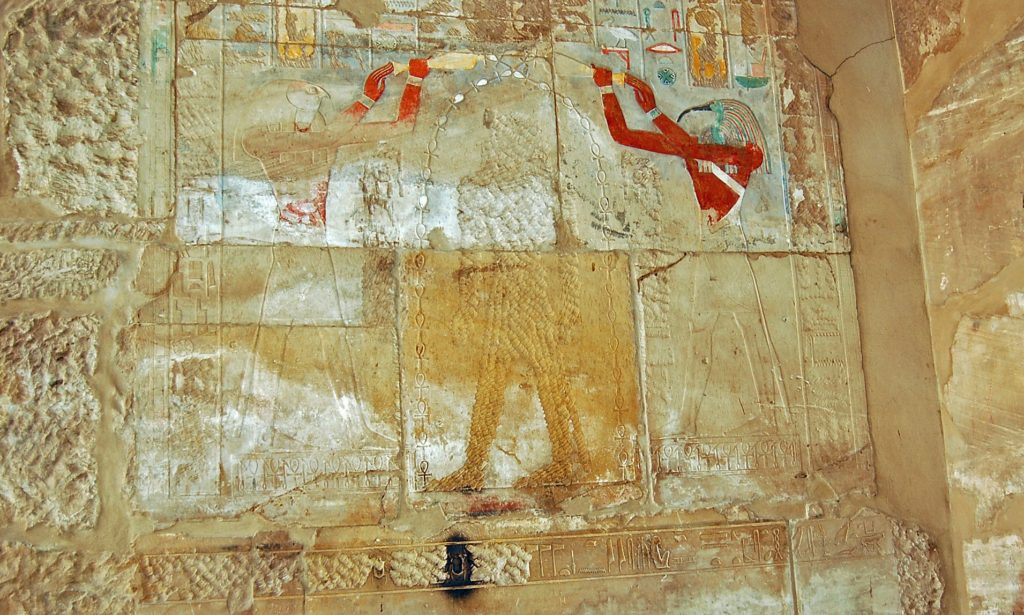
Hatshepsut was a female ruler of Egypt. Her successors set out to destroy not only memories of her but her very existence.
Hatshepsut was born in 1508 B.C., the daughter of Pharaoh Thutmose I. Upon the death of Thutmose I, his son Thutmose II became pharaoh. When Thutmose II died in 1479 B.C., his two-year-old son Thutmose III became pharaoh, with his aunt Hatshepsut as his regent. After a few years, Hatshepsut declared herself pharaoh, dressing as a man, wearing a false beard strapped around her head, and engaging in a massive building program unmatched for centuries.
Hatshepsut erected four huge obelisks at Karnak, the enormous temple complex near modern Luxor, two of which were 97 feet tall, each carved from a single block of granite. She built the Red Chapel of red quartzite to hold the barque (boat) priests used to transport the statue of the god Amun around the complex. She built the Palace of Ma’at, the Egyptian goddess of truth, justice and order, one wall of which included an image of Hatshepsut being anointed pharaoh by the gods.
When Hatshepsut died in about 1458 B.C., Thutmose III again became pharaoh. He destroyed the Red Chapel, replacing it with one honoring him. Believing that Hatshepsut’s soul or ka could survive in the afterlife in her images, Thurmose III (or perhaps his successors) destroyed or obliterated images and statues of Hatshepsut, including her image in the Palace of Ma’at. Successors removed Hatshepsut’s name from lists of pharaohs. As a result, Hatshepsut’s extraordinary reign was unknown until the twentieth century, when archaeologists reconstructed it from images overlooked for destruction. The Red Chapel at Karnak has been reconstructed from its original materials. The obliterated image in Karnak’s Palace of Ma’at provides evidence of the still unknown motives of her successors to destroy her afterlife existence.
Comments are closed.